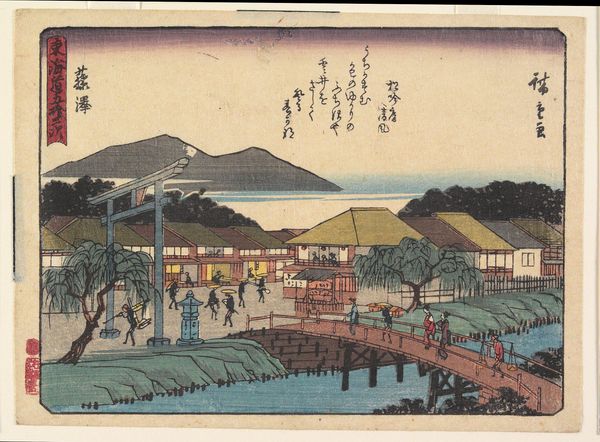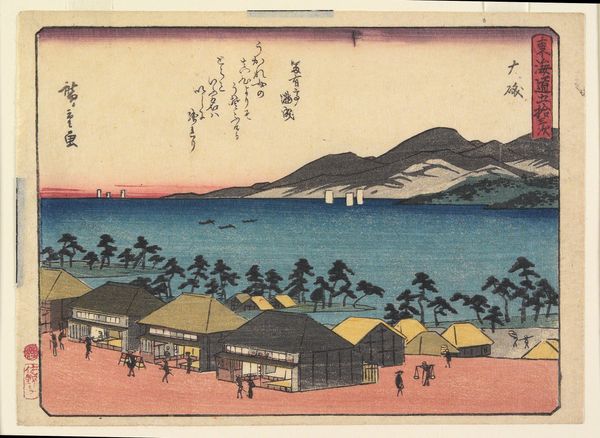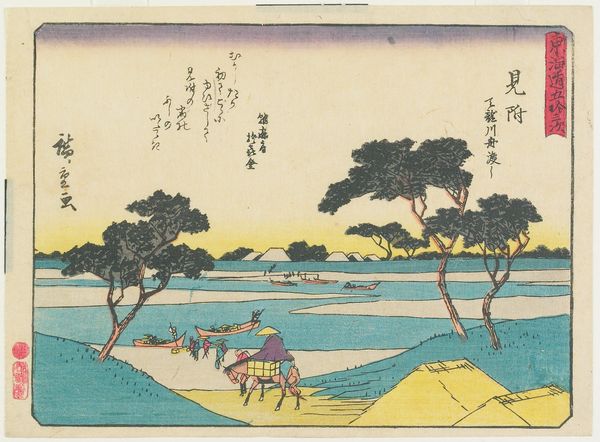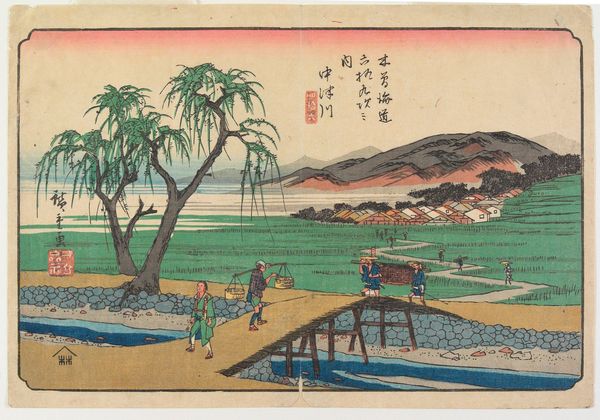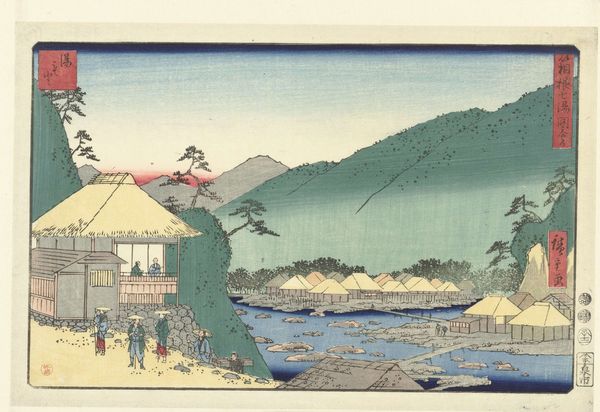
print, woodblock-print
#
water colours
# print
#
asian-art
#
landscape
#
ukiyo-e
#
personal sketchbook
#
woodblock-print
Dimensions: 6 1/4 x 8 3/16 in. (15.9 x 20.8 cm) (image)6 9/16 x 8 15/16 in. (16.7 x 22.7 cm) (sheet)14 x 17 15/16 in. (35.5 x 45.5 cm) (mat)
Copyright: Public Domain
Curator: I’m immediately struck by how utterly charming this is! It's bustling, yet peaceful... a real snapshot of daily life. Editor: Indeed. We are looking at Utagawa Hiroshige's "Hamamatsu," a woodblock print created around 1840-1842. The piece, which is held here at the Minneapolis Institute of Art, exemplifies the Ukiyo-e tradition of capturing scenes from the "floating world". Curator: Floating world! Isn’t that the best description? It feels so… transient, ephemeral. Like catching a dream with open hands. Editor: Precisely. Consider how Hiroshige uses the conventions of Japanese art to depict the figures almost as brushstrokes themselves. The figures on the road aren't merely decorative. They underscore the realities of Edo-period travel and commerce. Think of the rigid class structures underpinning these seemingly bucolic journeys. Curator: Oh, for sure. I mean, look at those porters. You feel their fatigue, even in those simple lines. But what gets me are the rooftops – that glowing gold! It just lifts the whole scene. Makes it feel optimistic, almost... magical. I wonder, what statement about commerce, travel or the people in that era could the artist be trying to say with this particular style? Editor: That ochre certainly draws the eye. Though remember the Japanese aesthetic often uses color symbolically. It might be a commentary on wealth, but equally could denote something quite spiritual given the temples behind. Notice the compositional tension between the sprawling horizontal plane of the foreground, with all the figures going about their day and then your eye travels vertically, past the dark line of trees to meet a castle in the distance? A deliberate choice, underscoring power. Curator: A delicate dance of social commentary then, you think? Power juxtaposed with the mundane! And of course, that quintessential Japanese touch of nature weaving its way into everything... even the castles. It’s art reflecting life reflecting art reflecting life, again! Editor: Very true. Hiroshige, through a seemingly serene cityscape, really provides layers to peel back— ones involving hierarchies, social conditions, and ever-present nature. It resonates so much because those themes remain persistent today. Curator: Persistent echoes in our floating world...I love it!
Comments
No comments
Be the first to comment and join the conversation on the ultimate creative platform.
